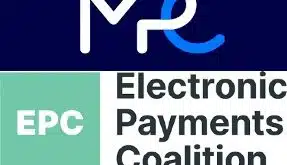Citing little enthusiasm by either consumers or merchants for contactless card payments, JPMorgan Chase & Co. has quietly begun informing cardholders that it is discontinuing its blink contactless program. While at first glance blink’s demise seems like a setback for chip-based card payments in the United States, it is unlikely to slow the country’s conversion to Europay-MasterCard-Visa (EMV) chip card payments, according to a researcher.
New York City-based Chase recently has been sending notices to holders of its MasterCard-branded cards that it is gradually discontinuing blink, the Chicago Tribune reported this week. Chase will reissue the cards under normal replacement schedules as Visa cards that do not include blink chips.
“For newly issued cards, we have discontinued blink due to limited merchant acceptance and low customer usage,” a Chase spokesperson tells Digital Transactions News by email. “Blink will continue to be available on a majority of existing cards until those cards expire or need to be replaced.”
The spokesperson would not disclose how many cards Chase, the nation’s biggest credit card issuer and a major debit card issuer, has issued with the blink chip.
Chase introduced blink nine years ago to great fanfare as one of the early U.S. contactless chip cards. Blink was not a single card product, but a chip Chase inserted into a number of its debit and credit card portfolios. The backs of the cards featured the blink logo. Within a few months, Chase had issued 5 million cards with blink chips, Digital Transactions News reported.
Somewhere along the way, however, the enthusiasm waned. The Federal Reserve’s most recent payments study, for the year 2012, estimates there were only 43 million contactless card payment transactions that year, about one-half of 1% of the 82.3 billion total card transactions. And only 660,000 U.S. retail locations, about 8% of the country’s 8 million card-accepting merchant locations, currently have contactless card readers, according to an Aite Group LLC study. Most are high-volume, small-ticket merchants such as quick-service restaurants and convenience stores.
This lack of a contactless card merchant base has slowed issuance of not only of contactless cards, but the growth of payments by smart phones equipped with near-field communication (NFC) chips, which can communicate with contactless terminals. But blink’s discontinuance “is a somewhat complicated story, with overlapping pieces,” says Gareth Lodge, a London-based senior analyst at Celent, a part of consulting firm Oliver Wyman, in an email to Digital Transactions News.
“The first part is to do with contactless adoption,” says Lodge, who is familiar with the U.S. payments market. “Contactless has really grown in some markets, but as a general rule, has had a slow start.” Of course, there is the familiar network problem of giving consumers contactless cards and merchants terminals.
“You then need to do something better than the existing methods to drive usage,” he says. But some contactless programs have cost merchants more in interchange than conventional card payments and have not delivered on their promise to cut transaction times, according to Lodge.
In a few cases, however, contactless payments have gained ground. On some London buses, the Oyster transit card or general-purpose contactless cards are the only cards accepted, Lodge says. In Paris, the subway system gives contactless card users lower fares than cash-paying commuters. “The markets where contactless has taken off is where there is enforced use,” says Lodge. In the U.S., the Chicago Transit Authority’s new Ventra contactless cards seem to have overcome a problem-plagued rollout.
Besides the market headwinds, blink also was caught up in Chase’s strategy to create its own closed-loop card network business called Chase Merchant Services using its majority-Visa card portfolio and the big merchant base managed by its Chase Paymentech merchant-acquiring subsidiary. To do that, Chase is licensing a version of Visa Inc.’s VisaNet network. As part of the deal, Chase agreed to convert an unspecified number of its MasterCard credit and debit cards to the Visa brand. “Blink was agnostic to Visa and MasterCard,” says Lodge. “In effect, the deal cuts out MasterCard.”
But the end of blink doesn’t change the fact that Chase, like all other card issuers, faces an October 2015 liability shift from the card networks in which financial responsibility for counterfeit fraud resulting from a point-of-sale transaction will be assigned to the party—issuer or merchant—that didn’t support EMV chip card payments. That has payments experts predicting a big ramp-up in EMV card issuance and a corresponding increase in deployment of EMV terminals. But most EMV cards are expected to be of the contact variety, which the cardholder inserts or “dips” into the terminal, rather than the more expensive contactless type.
Getting rid of blink clears the way for Chase to concentrate on EMV, according to Lodge. “Rather than a retreat, this [news about blink] may be the beginning of a charge,” he says. “EMV is one vehicle to expand the card issuance yet further, and a tipping point for Chase to sell EMV terminals to merchants.”






